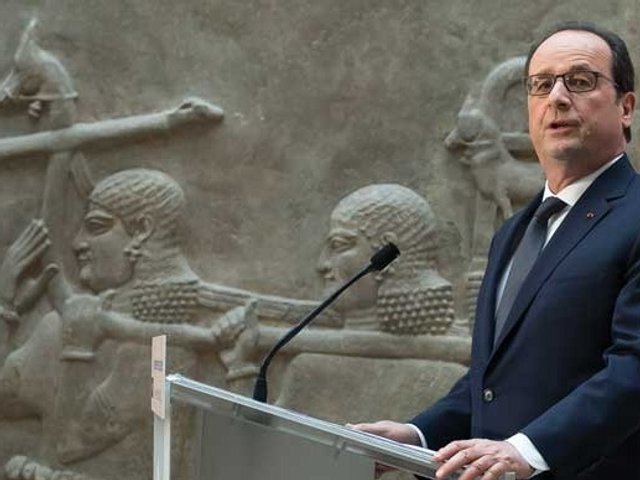With the Bush administration dragging the US into war, artists and entertainers have taken centre stage among the protesters. Film stars Kevin Spacey, George Clooney and Robert Redford have weighed in against the use of force, as has Martin Sheen, who plays a US president in the TV series “The West Wing”. Actor Sean Penn took out a $56,000 anti-war ad in The Washington Post.
Yet polls indicate that most Americans could not care less what actors or musicians think about foreign policy. In fact, fans of the pacifist performers have threatened to boycott films and TV shows if stars do not keep their opinions to themselves. The Screen Actors Guild has decried this as “repression,” recalling the dark days of McCarthyism.
Critic Christopher Knight saw a review he had written in the Los Angeles Times, denounced by his own editors the following day. His piece had begun: “The imbecilic plan for war with Iraq currently on offer from the Bush administration has yet to register much support from the American public—yet, even minus a coherent argument, [Bush] seems prepared to proceed without a public mandate.” The ensuing “Correction” stated: “It was an unusually harsh political judgment, particularly in the context of a work of cultural criticism,” and although “the subject of the review was an exhibition of anti-war art, and therefore a degree of political background was appropriate, the attack was, in our view, a gratuitous political statement and should not have been”.
Art-world activism is everywhere, however, albeit at rather low volume. After the UN covered over its “Guernica” tapestry (The Art Newspaper, No.134, March 2003, p.1), angry artists created a web site envisioning proliferation of countless replicas of the work, but the project does not seem to have got off the ground.
Last month, artists armed with pencils and paper converged on museums in New York, Boston, Rome, Copenhagen and elsewhere and drew antiquities from ancient Mesopotamia, i.e., modern-day Iraq. Organised by Not in Our Name, the peaceful “Drawn-ins” were intended “to pay homage to this land, culture, and people which our government is planning to destroy.” The largest turnout was at the Metropolitan in New York where reportedly some 500 people sketched the Assyrian reliefs.
The College Art Association has expressed deep concern “about the threat to human life, cultural heritage, freedom of expression [and] civil liberties, and human rights at home and abroad,” not to mention the strain on funding for arts and education.
The Archaeological Institute of America also “expresses its profound concern about the potential for damage to monuments, sites, antiquities, and cultural institutions as a result of war,” and offers its members expertise in identifying and protecting sites.
Both organisations urge ratification of the 1954 Hague Convention on the Protection of Cultural Property in the Event of Armed Conflict.
Not many anti-war works of art have been created, but Wesleyan University in Middleton, Connecticut, organised a show of artists‚ responses to life and politics in the wake of 11 September, including Joyce Kozloff’s walk-in globe whose interior is lined with painted maps of countries bombed by the US since 1945, and Arnold Mesches‚ collage series “The FBI Files,” which incorporates pages from the artist’s own FBI dossier.
The MCA Chicago has mined its collection for anti-war efforts by H.C. Westermann, Peter Saul, Leon Golub, Malcolm Morley, Brabara Kruger, and others, in a show titled, “War (what is it good for?)” (until 18 May), while. Track 16 Gallery in Santa Monica has presented 120 posters from the past 50 years in “The anti-war show”.
o The International Committee of the Blue Shield (ICBS) has issued a statement, delivered to President Bush, British Prime Minister Tony Blair, Iraqi dictator Saddam Hussein, and the United Nations, among others, expressing deep concern over the potential damage to cultural sites in Iraq in the event of a war. The statement urged for museums, libraries, monuments and archaeological sites in Iraq to be protected and called on all governments to provide the necessary resources for the repair and restoration of any damage. The ICBS, established in 1996 to protect the world’s cultural heritage from wars and natural disasters, is formed by four non-governmental organisations: the International Council on Archives, the International Council of Museums, the International Council of Monuments and Sites (all in Paris) and the International Federation of Library Associations and Institutions (The Hague).


